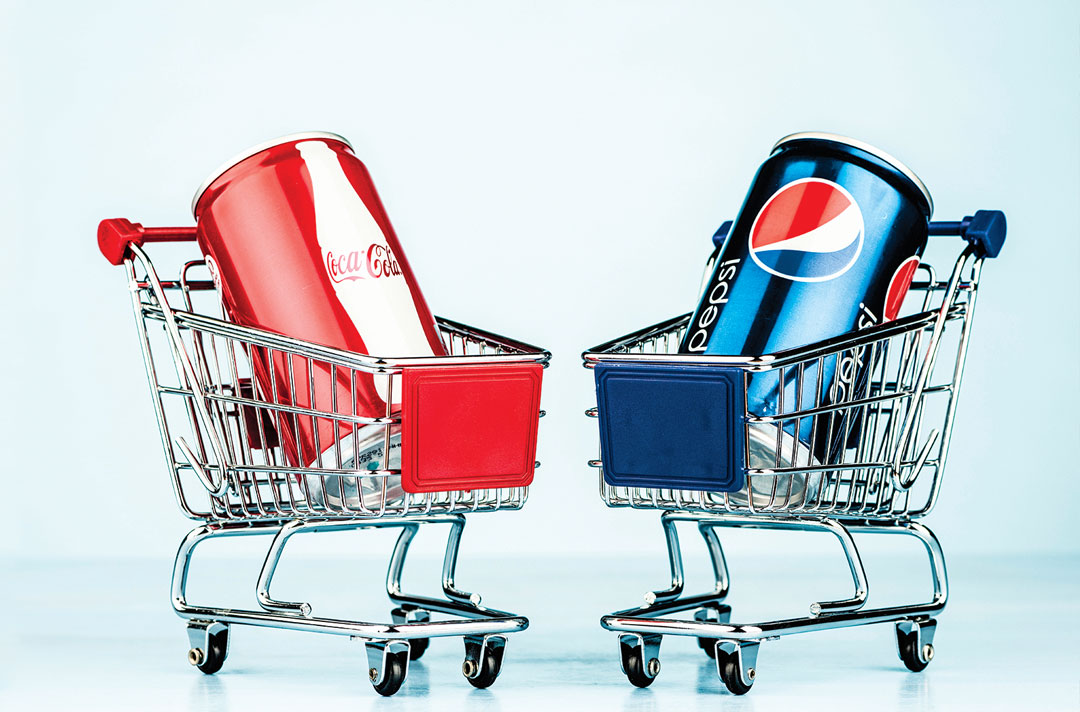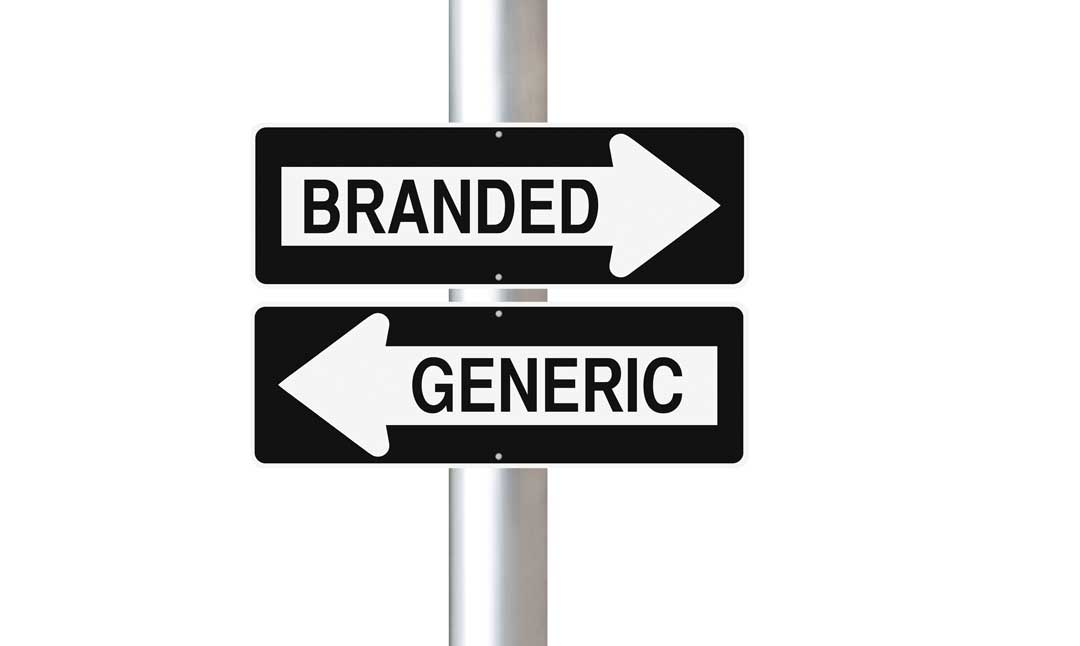THE KLEENEX PARADOX: Do you really need a Kleenex for your allergies, or can you survive with whatever tissue or handkerchief is handy? That’s what the government wants to know during the acquisition process. (Images by Getty Images)
What to know and what to avoid about brand name restrictions.
by Dennis Longo
The fourth article in the On Contracting series, based on the Competition in Army Contracting course developed by the author for the Office of the Deputy Assistant Secretary of the Army for Procurement.
I have allergies. For years I’ve had to sneeze into a handkerchief or wipe my nose at the most awkward moments. And when a handkerchief isn’t available I’d discreetly reach for a Kleenex hoping that no one would discover my hideous disorder. It’s embarrassing. And because of these face-leaking episodes, my having a Kleenex when a handkerchief isn’t available is essential to maintain my personal dignity.
I realize that Kleenex is a commercial brand name product and I don’t necessarily need a Kleenex brand tissue, I just need a tissue to relieve the face leak.
Which brings me to the real point of this article—understanding and articulating the government’s procurement needs for commercial brand name items or services.
“I need a Dumpster because it satisfies my agency’s needs.”
A commercial item is given a brand name to mark the item as being sold by its manufacturer to the general public. These brand names are usually easy to identify—such as Kleenex, Dumpster and Novocain.
When the government wants to buy a commercial item, does the government need that particular brand name item or simply need the function that the brand name item is designed to perform? Is the particular brand name item essential to the government’s requirements, or can we modify a similar or generic commercial item to meet the government’s requirement?
While commercial marketing may promote a product as a convincing solution to a certain need, the Federal Acquisition Regulation (FAR) requires the government to purchase the items and services it needs in a manner that will promote full and open competition.

MAY THE BEST BRAND WIN: Even when deciding between two brand names, acquisition personnel need to produce proof that one brand is superior to the other through market research.
THE EFFECT OF A BRAND-NAME RESTRICTION
When the government restricts a purchase to a brand name item, or brand name-or-equal basis, it also restricts full and open competition. A brand name restriction eliminates full and open competition among all other manufacturers and suppliers of similar items or services. A restriction to full and open competition must first be authorized by documenting the sole-source action in a justification and approval (J&A), the document that authorizes, under certain conditions, contracting without providing for full and open competition.
But why, you ask, does a purchase description for a brand name item, or brand name or equal, restrict competition when numerous suppliers of that brand name may be available to compete for the contract?
A purchase description that requires only Kleenex tissues, for example, effectively disqualifies all other tissue manufacturer from consideration. According to the FAR and the Defense FAR Supplement (DFARS), a brand name, or brand name-or-equal purchase description, restricts competition regardless of the number of sources solicited, and must be justified.
However, a brand name restriction may be necessary under certain circumstances. Information technology parts manufactured by a particular manufacturer, for example, may be essential components of a certain military system used in critical mission-related functions relating to both national defense and human safety. In this example, the J&A must explain why the brand name information technology parts are “essential to the government’s requirements, and market research must indicate that no other companies’ similar products meet, or can be modified to meet, the government’s requirements.”

RESTRICTION NEEDS JUSTIFICATION: If a purchase is restricted to a particular brand name, or brand name-or-equal, it restricts full and open competition—and that needs a J&A documenting the sole-source action.
WHAT TO KNOW
A brand name description restricts competition typically because the government considers the brand name item or service to be available from only one responsible source and no other type of supplies or services will satisfy the government’s requirement—an exception to full and open competition allowed by FAR 6.302-1. All sole-source contracts awarded under this “one source” exception must be supported by an approved J&A.
The rationale for a brand name restriction that exceeds the $250,000 simplified acquisition threshold must address two elements in a J&A, in addition to any mission-specific reasons to support the one source authority:
- The brand name item or service must be “essential to the government’s requirements.”
- Market research must indicate that other companies’ similar products do not meet or cannot be modified to meet the government’s requirements.

CONSIDER THE OPTIONS: Is your chosen brand name item or service essential to the government’s requirements?
Element 1—Essential to the government’s requirements.
“Essential” means indispensable, or something that is critical to sustain the life of something. Brand name items may be critical, for example, to the operation of a certain military system to ensure human safety or the mission effectiveness of a system. The need to procure a brand name item or service that is essential to the government’s requirements eliminates all other commercial items or services from consideration—even commercial alternatives that may perform the same function.
Explaining why the particular brand name item or service is essential to the government’s requirements is vital to support the brand name restriction in a J&A.
In April 2015, for example, the Navy’s request for quotations (RFQ) for brand name computer servers was challenged by a protest to the Government Accountability Office (GAO). The protester claimed that the request’s brand name requirement improperly restricted competition.
The Navy’s J&A supporting the brand name restriction stated that the brand name computer servers were necessary because the servers were an integral component of the Navy’s submarine network and the use of the brand name components throughout that system was essential to the government’s requirements. Because the servers were deemed mission essential upgrades for the Navy’s submarines, the justification effectively disqualified products manufactured by other companies.
The GAO denied the protest because the brand name servers were integral components of the Navy’s network system used in critical submarine functions relating to both national defense and human safety and were necessary to achieve the highest possible reliability and effectiveness. See Core Systems, B-411060.

MISSION CRITICAL: A brand name restriction may be necessary under certain circumstances, like a particular manufacturer’s information technology that are essential components of a certain system.
Element 2—Market research must indicate other companies’ similar products do not meet, or cannot be modified to meet, the government’s requirements.
Thorough and objective market research will assist the government to identify the capabilities and availability of commercial products or services that meet the government’s needs. When the government intends to procure a brand name item or service, it must conduct market research to determine if other companies’ similar products that can meet its requirements. The market research report must describe the extent and the results of the market research conducted. The research must have been meaningful.
According to FAR 10.001, agencies shall conduct market research to determine if commercial items or services meet or could be modified to meet the government’s requirements. See FAR 10.001(a)(2) and (3). Failure to do so will invalidate a brand name restriction.
For example, in 2010 the Coast Guard restricted competition to authorized ITT Goulds Pumps repair facilities. The Coast Guard’s J&A restricting the use of Goulds’ brand name pumps and repair services stated that use of other than Goulds brand name parts could cause equipment failure and render the patrol boats unable to complete mission requirements and possibly place the crew in danger.
A pump repair company that was not an authorized Goulds pump repair facility protested the Coast Guard’s brand name restriction and demonstrated that it had successfully provided these pumps and services in the past. GAO subsequently overturned the brand name restriction because the Coast Guard had not presented any evidence of conducting market research to determine if commercial items or services meet or could be modified to meet the government’s requirements. See Missouri Machinery & Engineering Company, B-403561.
When the government intends to restrict its needs to a particular a brand name item or service, by regulation it must conduct market research to accurately identify its needs and evaluate commercial items or services that may be available to meet those needs. Market research for a brand name restriction must be robust and comprehensive to ensure the requirement is not unduly restrictive—that the brand name restriction is reasonably necessary to meet the government’s needs. See also B-415785, Land Shark Shredding, March 6, 2018.
A brand name restriction also must be predicated on an evaluation of other similar products and an evaluation of other companies’ similar products that meet, or may be modified to meet, the government’s needs and must be adequately documented in the J&A.
One agency’s RFQ limiting competition to authorized resellers of brand name “AtHoc” licenses, upgrades and technical support for its mass warning and notification system was challenged by a protest to the GAO in 2013.
The J&A that approved the brand name restriction explained that the AtHoc system was already installed in the agency’s infrastructure and in use by all its regions. The market research explained that the brand name restriction represents the best value, exceeds technical specifications, reduces training and provides quick alerts within the agency.
The GAO sustained the protest because the agency failed to document its market research of other vendors’ similar products. Instead, the J&A stated that, based on market research, the purchase of the AtHoc brand name represented the best value solution because it exceeded technical specifications. See Desktop Alert, B-408196.
Finally, requiring the purchase of a brand name item or service without conducting market research not only violates acquisition regulations, but also may waste government resources.
In September 1990, for example, the General Accounting Office, as it was named then, reviewed a U.S. Army Corps of Engineers $3.3 million contract for upgrading electrical systems at Clear Air Force Station, Alaska. The General Accounting Office sought to determine whether the Corps’ $1.4 million brand name restriction for General Electric equipment included in that contract was proper.
General Accounting Office’s review found that the Corps’ actions were not in accordance with FAR market research requirements because it did not determine if similar commercial products would meet its needs. Had the Corps competed the electrical equipment instead of requiring the GE brand name equipment, it might have saved over $600,000 of the contract’s total cost, according to the General Accounting Office. See Corps of Engineers Weak Contracting Practices.

CONSIDER THE COST: Purchasing brand name items or services without market research may waste government resources.
CONCLUSION
A brand name, or brand name-or-equal, purchase description restricts full and open competition regardless of the number of sources solicited and must be justified. Although a brand name restriction may be necessary under certain circumstances, the particular brand name item or service must be essential to the government’s requirements and fully supported by robust and comprehensive market research to ensure the requirement is not unduly restrictive of competition.
Check out this Commercial Brand Name Items in a DOD Contract video for more information.
Additional information on Notice of a Proposed Contract Action and its impact on Competition in Contracting is available in the Training Library at: https://spcs3.kc.army.mil/asaalt/procurement/SitePages/NewTraining.aspx.
DENNIS P. LONGO is advocate for competition, task and delivery order ombudsman and senior procurement analyst at Army Contracting Command at Aberdeen Proving Ground, MD. A member of the Army Acquisition Corps, he golds a bachelor’s degree from University of Baltimore and is level III certified in contracting. His assignments include acquisition specialist at the Program Manager for Chemical Demilitarization within the US Army Chemical Materials activity and procurement analyst at the US Army Legal Services Agency. He served in the Army from 1971 to 1973 at the Southern European Task Force, Italy, and was deployed to Iraq as a civilian in 2003. He authored the Defense Acquisition University (DAU) Continuous Leaning DOD Purchase Card tutorial in 2003 and DAU CON 160 Competition in Contracting course in 2020. He has been an instructor for competition in contracting since 2004. The first of the author’s On Contracting articles appeared in the Winter 2020 edition of Army AL&T.
Read the full article in the Fall 2020 issue of Army AL&T magazine.
Subscribe to Army AL&T News – the premier online news source for the Army Acquisition Workforce. ![]() Subscribe
Subscribe







